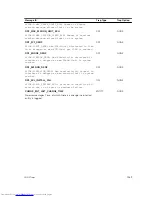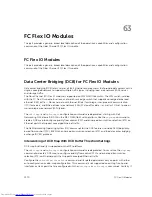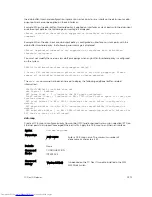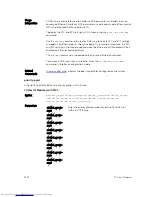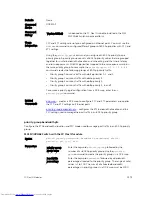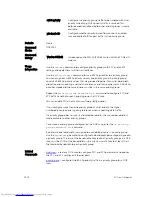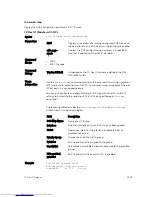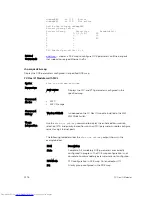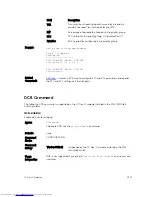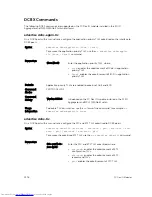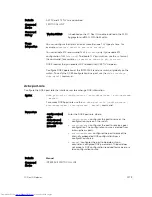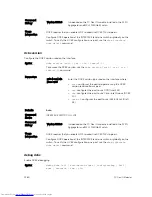
Field
Description
DCBX Operational
Status
Operational status (enabled or disabled) used to elect a
configuration source and internally propagate a DCB
configuration. The DCBX operational status is the
combination of PFC and ETS operational status.
Configuration
Source
Specifies whether the port serves as the DCBX configuration
source on the switch: true (yes) or false (no).
Local DCBX
Compatibility
mode
DCBX version accepted in a DCB configuration as
compatible. In auto-upstream mode, a port can only receive
a DCBX version supported on the remote peer.
Local DCBX
Configured mode
DCBX version configured on the port: CEE, CIN, IEEE v2.5,
or Auto (port auto-configures to use the DCBX version
received from a peer).
Peer Operating
version
DCBX version that the peer uses to exchange DCB
parameters.
Local DCBX TLVs
Transmitted
Transmission status (enabled or disabled) of advertised DCB
TLVs (see TLV code at the top of the show command
output).
Local DCBX
Status: DCBX
Operational
Version
DCBX version advertised in Control TLVs.
Local DCBX
Status: DCBX Max
Version Supported
Highest DCBX version supported in Control TLVs.
Local DCBX
Status: Sequence
Number
Sequence number transmitted in Control TLVs.
Local DCBX
Status:
Acknowledgment
Number
Acknowledgement number transmitted in Control TLVs.
Local DCBX
Status: Protocol
State
Current operational state of the DCBX protocol: ACK or IN-
SYNC.
Peer DCBX Status:
DCBX Operational
Version
DCBX version advertised in Control TLVs received from the
peer device.
Peer DCBX Status:
DCBX Max
Version Supported
Highest DCBX version supported in Control TLVs received
from the peer device.
FC Flex IO Modules
1383

